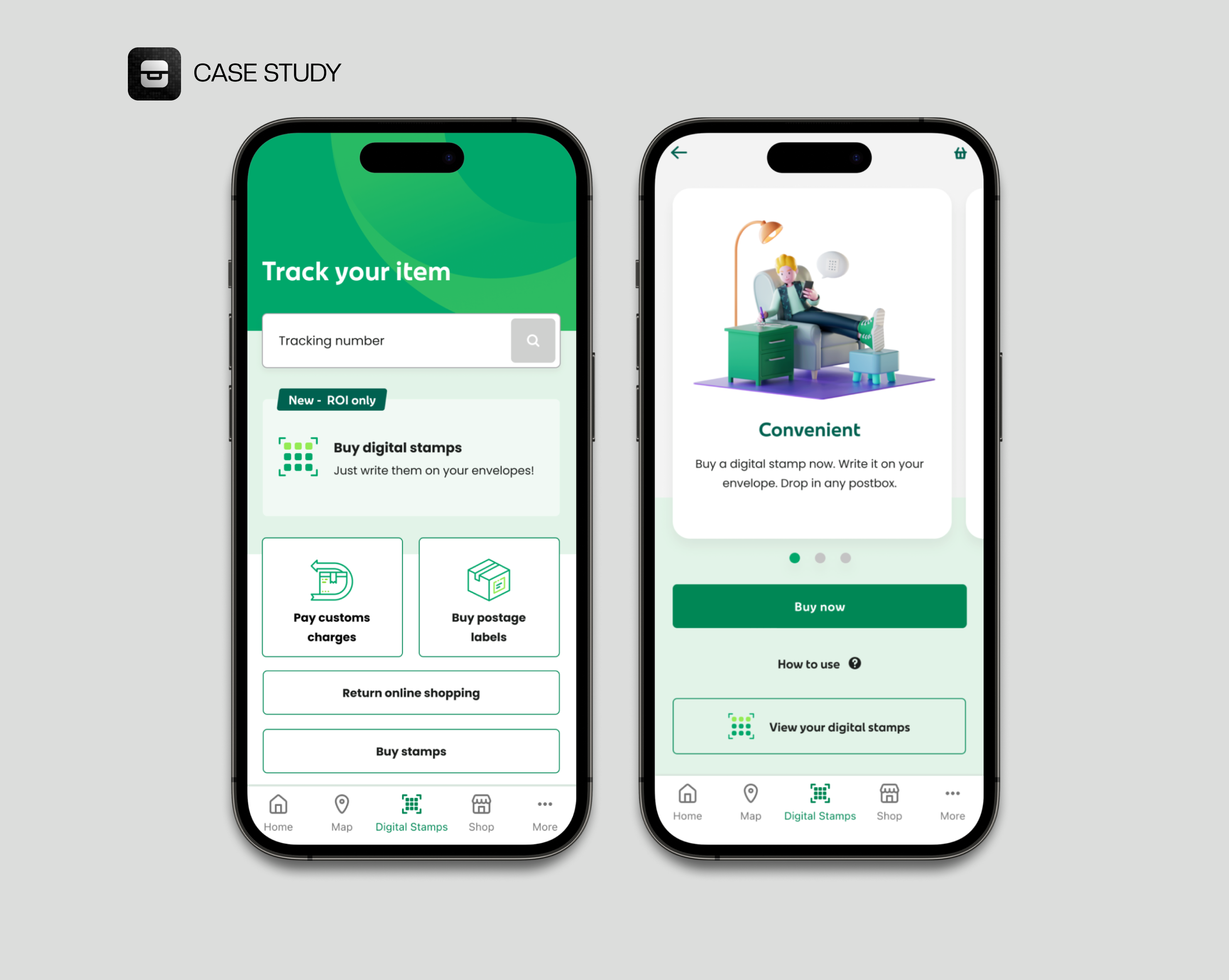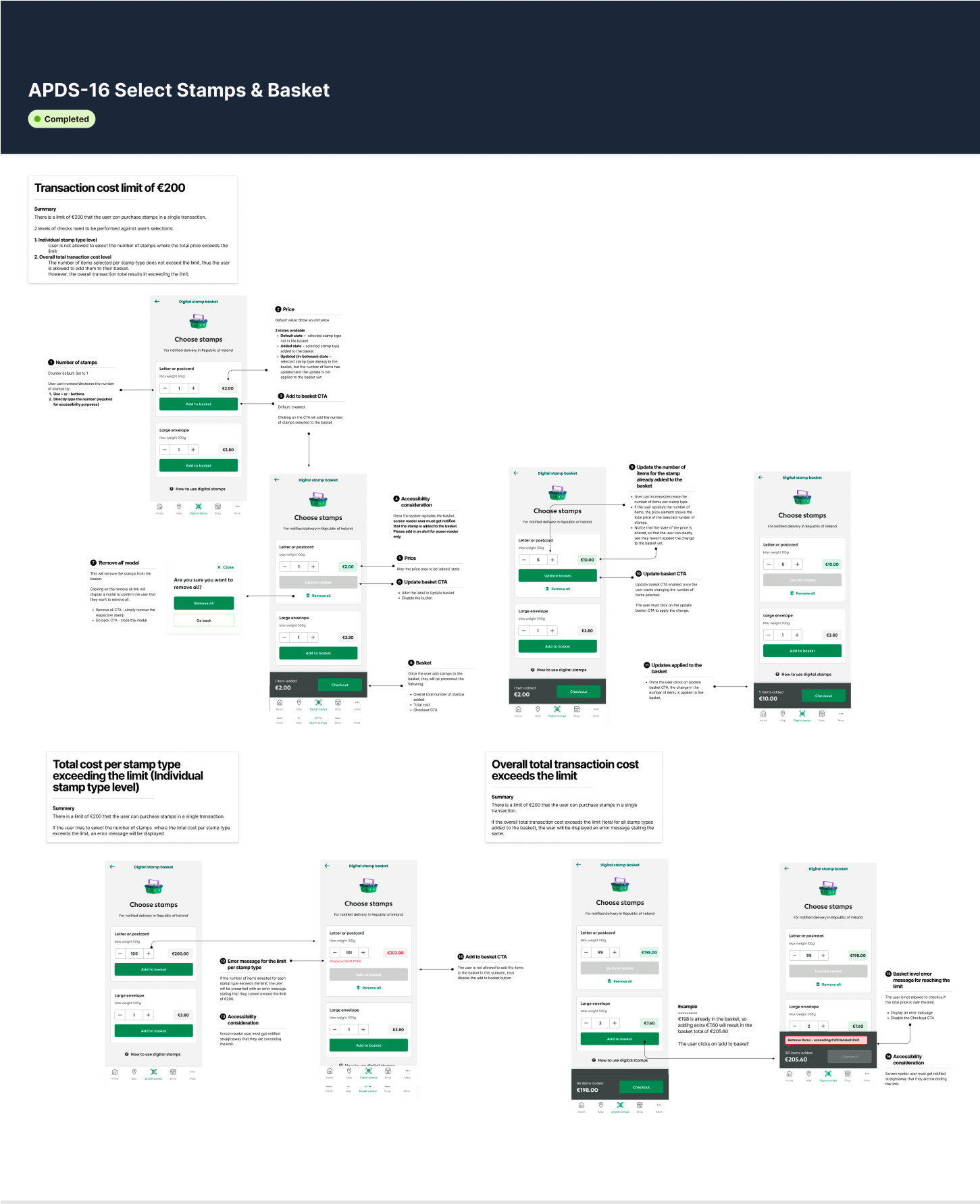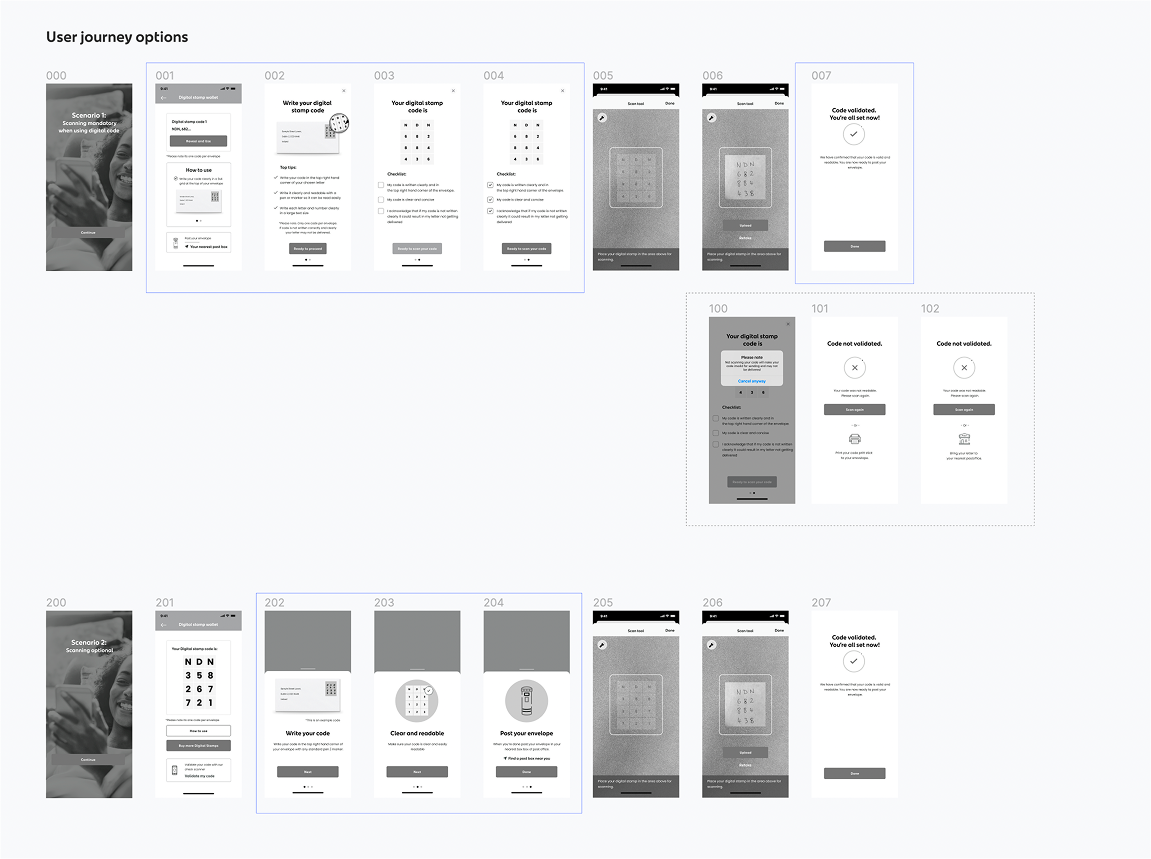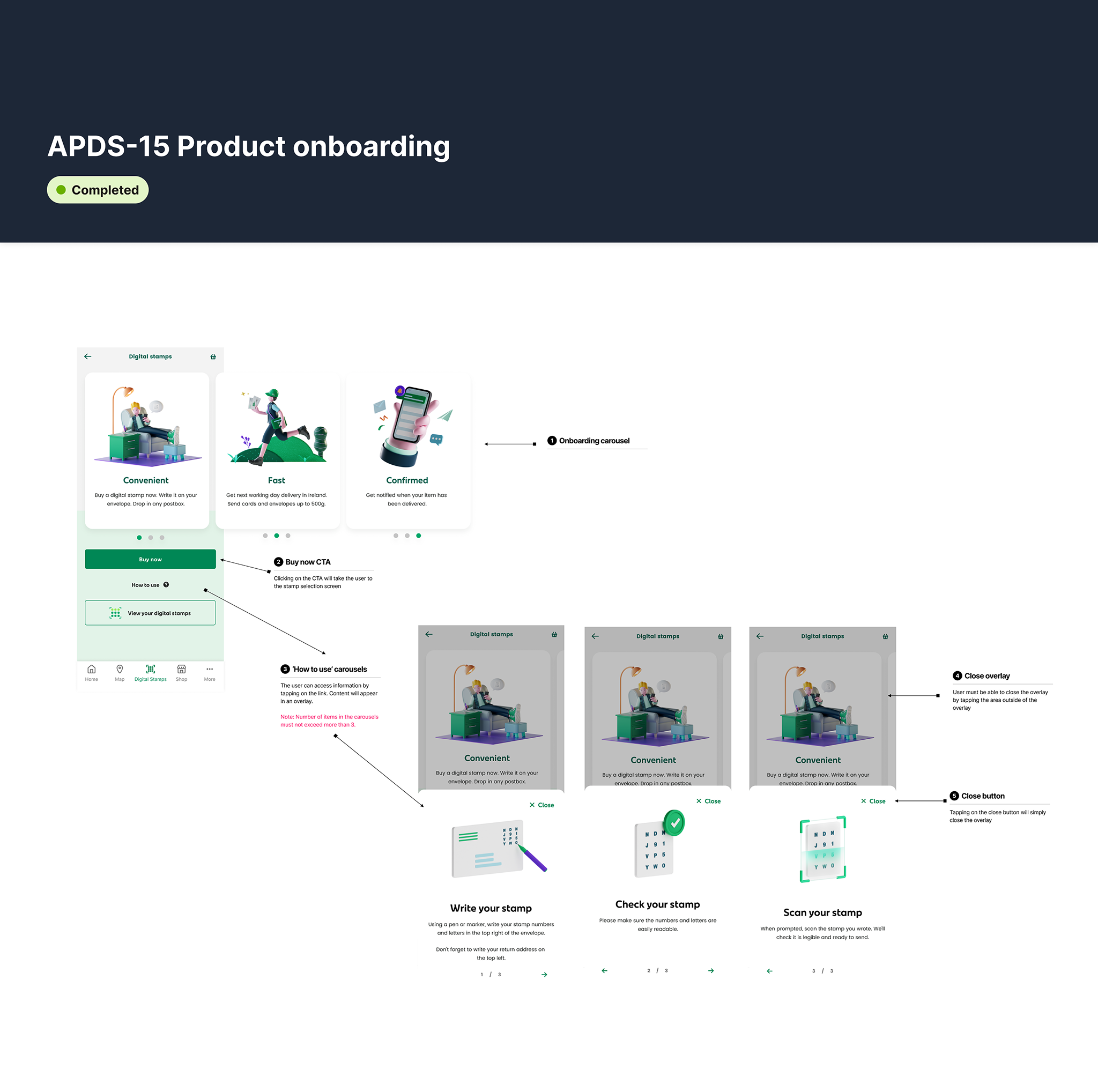An Post - Digital Stamp

Case Study: Designing An Post’s Digital Stamp
Overview
An Post’s Digital Stamp is a modern alternative to traditional adhesive stamps: customers purchase postage online or via app, receive a unique code, and write it on their envelope. As Product Designer, I was responsible for making the service intuitive, trustworthy, and accessible, while ensuring seamless integration with postal operations.
The Challenge
The innovation promised convenience but faced adoption barriers:
- Customer Understanding: Uncertainty about whether a handwritten code was “official” postage.
- Ease of Use: Long alphanumeric codes were error-prone.
- Trust & Legitimacy: Lack of familiar visual cues raised doubts about reliability.
- Operational Fit: Staff and systems needed to validate codes without friction.
To succeed, the Digital Stamp had to be as as reliable as a physical stamp.
My Role
I led the UX and service design, collaborating with product managers, engineers, and postal staff. My contributions included:
- Conducting research to uncover perceptions and barriers.
- Designing customer flows across app, web, SMS, and email.
- Supporting staff with guidance and validation workflows.
Process
1. Research & Insights
- Interviews with various customers, small businesses, and elderly customers.
- Usability testing on purchase flows and code application.
- Observations at sorting centers.
Key Insight: Customers wanted simplicity and reassurance — the digital stamp had to look and feel official.
2. Defining Design Goals
- Clarity: Make usage immediately obvious.
- Trust: Reinforce An Post’s authority.
- Inclusivity: Ensure accessibility for all demographics.
- Operational Reliability: Align with staff processes and infrastructure.
3. Design Solutions
- Streamlined Purchase Flow: Three clear steps (Choose postage → Pay → Get code) with one-tap copy and SMS/email delivery.
- Code Presentation: Grouped characters, clear placement guide, and contrast-friendly formatting.
- Trust Reinforcement: Branded screens, An Post logo, microcopy (“Valid nationwide for 12 months”), and illustrations of secure processing.
- Inclusive Features: Large-text, printer-friendly receipts; SMS/email alternatives.
- Operational Support: Staff-facing quick guides and fraud-prevention features.
Impact
- Adoption: Trust-building patterns improved customer confidence.
- Ease of Use: Formatting changes reduced errors in testing.
- Operational Alignment: Staff validated codes smoothly, avoiding bottlenecks.
- Perception Shift: Positioned as a legitimate, reliable postage option alongside traditional stamps.
Reflection
Designing the Digital Stamp required balancing the heritage of a trusted national service with the promise of digital convenience. By focusing on clarity, trust, and inclusivity, we delivered an experience that felt both innovative and familiar — driving adoption among customers.

Project Results & Impact – An Post Digital Stamp
In October 2022, An Post unveiled the world’s first digital stamp with delivery notification, enabling users to buy stamps in-app, apply a 12-digit code to mail, and get notified upon delivery. The launch was a major success for the client, reinforcing An Post as a leader in postal innovation.
- The product became a key pillar in An Post’s positioning as a modern, digital-first postal service.
- It contributed to accelerating An Post’s shift from traditional mail toward new digital revenue streams.
- In 2023, An Post’s revenue grew to €922.9 million (+4 % year-over-year) and its EBITDA rose markedly (doubling compared to 2022), demonstrating stronger profitability and financial resilience. An Post
- The company also earned top reputation honours: An Post was recognized as the most reputable organisation in Ireland over the last 15 years (2010–2024) in the Ireland RepTrak® study. The Reputations Agency
By driving both tangible financial results and brand esteem, this project didn’t just deliver a new product — it helped reposition An Post at the forefront of industry innovation.




